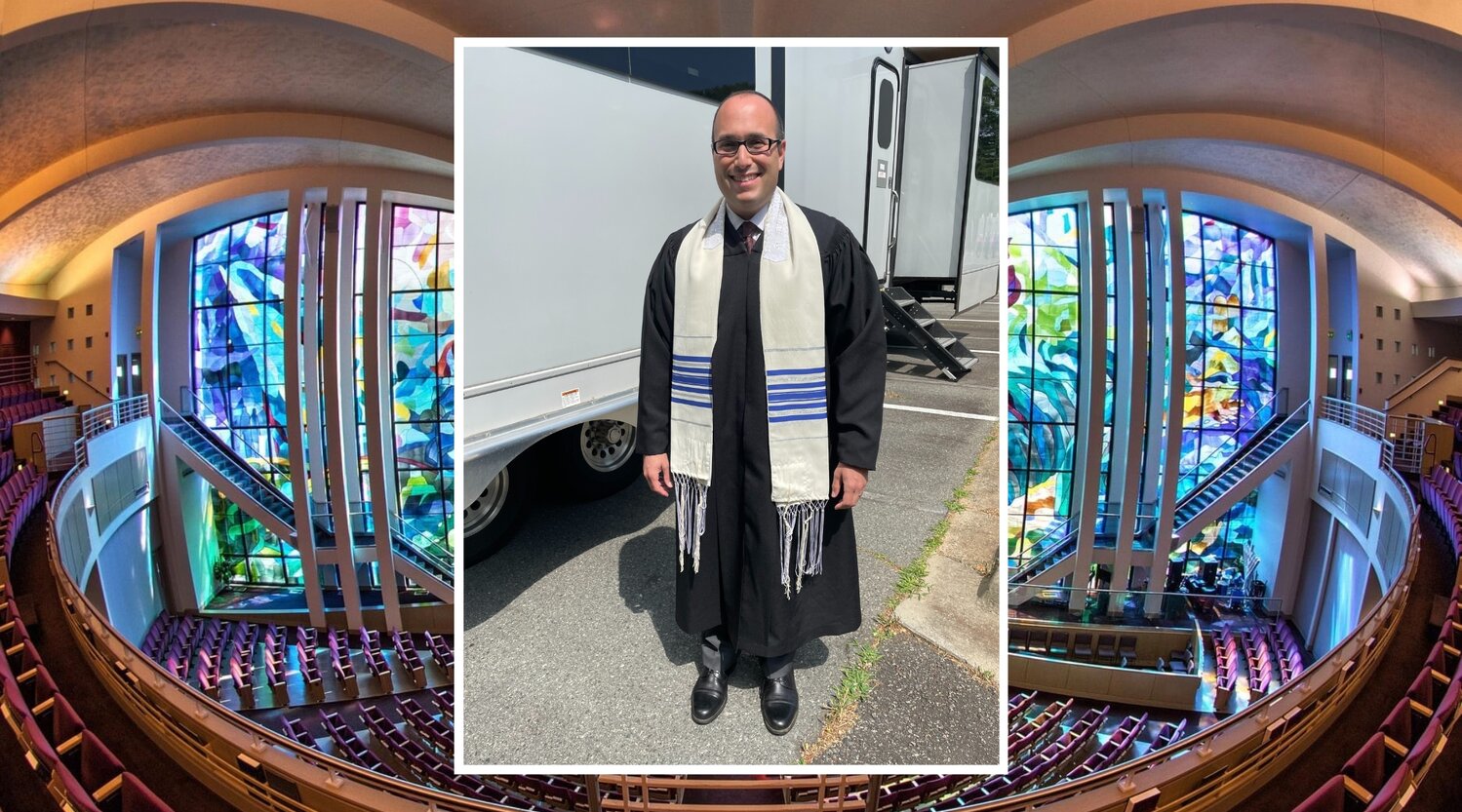Meet the real-life rabbi in the synagogue scene of ‘Are You There God? It’s Me, Margaret’
(JTA) – Rabbi Michael Wolk was nervous when he stepped foot onto his synagogue’s bimah in May 2021 – but not because his congregation was returning to in-person prayer after a pandemic pause.
The jitters were because he was about to debut as an actor, in a role for which he hadn’t auditioned: as the rabbi in “Are You There God? It’s Me, Margaret,” which debuted in theaters on Friday [April 28].
Wolk was initially brought on as a consultant for the synagogue scene in the film adaptation of Judy Blume’s classic coming-of-age novel, published in 1970 — more than a decade before he was born. He was elevated to on-screen talent when the original actor for the role of Rabbi Kellerman left the project.
“They called me that night and said he doesn’t feel that he can do it – would I be willing to play the rabbi?” Wolk told the Jewish Telegraphic Agency. He said "yes."
The story centers on a sixth-grader, Margaret (played by Abby Ryder Fortson), who has a Christian mother, and Jewish father who have raised her in neither tradition. As part of Margaret’s grappling with her anxiety about growing up, she embarks on an effort to explore religion and visits a synagogue with her grandmother Sylvia, portrayed by Kathy Bates, who is pushing her to identify with Judaism.
In the story, Margaret and her family live in New Jersey, but the filming took place in Charlotte, North Carolina, where Wolk has been the rabbi of Temple Israel, a Conservative synagogue, since 2020. (That year, the synagogue petitioned to have its name removed from a local memorial to Judah Benjamin, the Confederacy’s most prominent Jew.) A Long Island native, he came to the synagogue from a pulpit in Louisville, Kentucky.
The film’s producers asked Wolk to prepare what he referred to as a “sermonette” and to stand in the prayer leader’s traditional spot on the bimah in Temple Israel’s sanctuary, surrounded by stained glass. Some of his congregants sat in the pews as extras, which Wolk recalled as a breakthrough moment for Temple Israel, coming a year into the pandemic.
“It was my first time being in the room, being on the bimah with the people in the congregation,” he said. “Even little things like that moment of people responding ‘Shabbat shalom’ when I said it to them, there was something very moving about that.”
But the moment was hardly a typical Shabbat service. For one thing, it was a weekday. For another, Wolk was wearing a black robe, commonly worn by Conservative rabbis and cantors in the mid-20th century but not in fashion today. And his sermon was interrupted repeatedly.
“It did not feel like I was leading a service at any given time because they would have me say ‘Shabbat shalom’ 100 times and have the people and the extras in the room respond ‘Shabbat Shalom’ over and over again,” Wolk said.
The synagogue scene, which is just a few minutes long, took 14 hours to film.
Besides the rabbi’s attire, there are a few differences between the American Jewish world of “Are You There God? It’s Me, Margaret” in the 1960s and 1970s and the one today. The film has a female cantor, which wouldn’t have been the case at the time the movie takes place. While the book and movie don’t specify which movement of Judaism the synagogue Margaret visits belongs to, women weren’t ordained in the Reform movement until 1972 and in the Conservative movement until 1985.
“I did point that out and they were interested in representation,” Wolk said. “And that doesn’t bother me that much, but I know that it’s historically inaccurate.”
There are some other continuity issues with the scene: the actors used the prayer books in Temple Israel’s sanctuary, which were only published in the last decade. While the congregation is well over a century old, its current building wasn’t constructed until 1992. And, Wolk confessed, he is wearing an Apple watch, though it is obscured by his robe.
But, he said, norms around interfaith families like Margaret’s have changed over the decades. In the United States, Jews who married before 1970 married non-Jews 17% of the time, according to a 2013 population study; now, that number is well over 50%. But contrary to what some feared, many of those interfaith couples are raising their children at least in part with Judaism. Their synagogues have adjusted accordingly.
“At the point when the book was written, there was no expectation that an interfaith family would want to participate in the religious life and Jewish life of a synagogue,” Wolk said. “And we know that’s not true right now. We have any number of interfaith families who are active and involved in Temple Israel.”
For more on interfaith relationships, listen to "Breaking the Glass," Jewish Rhody Media's six-episode podcast: jewishrhody.org/podcasts








